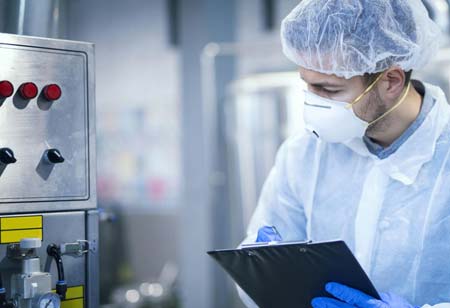THANK YOU FOR SUBSCRIBING
Be first to read the latest tech news, Industry Leader's Insights, and CIO interviews of medium and large enterprises exclusively from Food and Beverage Tech Review
Ensuring Safety through Secure Food Packaging Practices
The food industry is aiming to adopt the best packaging strategies and ensure a safe, non-adulterated food experience for the people. There exists a set of laws that guarantee expected hygiene and safety

By
Food and Beverages Tech Review | Tuesday, July 14, 2020
Stay ahead of the industry with exclusive feature stories on the top companies, expert insights and the latest news delivered straight to your inbox. Subscribe today.
The food industry is aiming to adopt the best packaging strategies and ensure a safe, non-adulterated food experience for the people. There exists a set of laws that guarantee expected hygiene and safety.
FREMONT, CA: The outbreak of the coronavirus has raised serious concern among the people regarding food and its packaging. However, the U.S. Food and Drug Administration (FDA) has not found any evidence to support a link between packaging and virus transmission.
The technological interventions come along with a set of related laws for safeguarding the entire mechanism. Let's look at the technologies in the field of food packaging and their related rules and regulations.
Microwave susceptors
With the widespread popularity of microwave cooking and heating, microwave susceptors are trending today. In association with this, the FDA has laid down 'Conditions of Use' that outline the temperature information that the materials or the food can sustain, and other related chemistry guidelines.
Antimicrobial Agents
[vendor_logo_first]Antimicrobials are commonly in use, for disinfecting the packages and the surfaces in contact with packages. These antimicrobial agents are under the regulation of the FDA and sometimes also require authorization from the Environmental Protection Agency (EPA). Additionally, food manufacturers add certain antimicrobials to extend the shelf-life of the food items which fall under the category of 'food preservatives' and necessitate a mention on the labels.
Biodegradable and Biobased plastics
At this crisis hour, the focus on environmental conservation and protection is at the peak. Owing to this, the popularity of biodegradable plastics for packaging has increased, which can breakdown on its own, not adding to any environmental damage. Biobased plastics are also trending, which develop from natural and renewable sources. The related laws ensure the use of proper food simulants that can transmit into the food and the suitable purity of the materials concerning the presence of natural contaminants, such as mycotoxins, in them.
Recyclable packaging
On the lines of sustainability, food companies are keener on adopting recyclable packaging techniques. Companies need to handover their plans for the same, to FDA, for examining and analyzing how safe is the recycling procedure and the resultant polymer. If the polymer succeeds through this phase, FDA grants a No Objection Letter. Moreover, to make the process convenient, FDA lays down the recycling guidelines such that the companies have enough knowledge about the surety of the new polymers. FDA also offers guidance for contaminant testing processes, assuring that the packaging material does not contain any prior contaminants, after undergoing recycling.
As the world depends on intelligence today, food packaging techniques and packaging laws have become smarter. From monitoring the packaging material to examining their effect on the perishability of the food, technologies and regulations are working hand in hand to establish a safe food landscape.
I agree We use cookies on this website to enhance your user experience. By clicking any link on this page you are giving your consent for us to set cookies. More info







